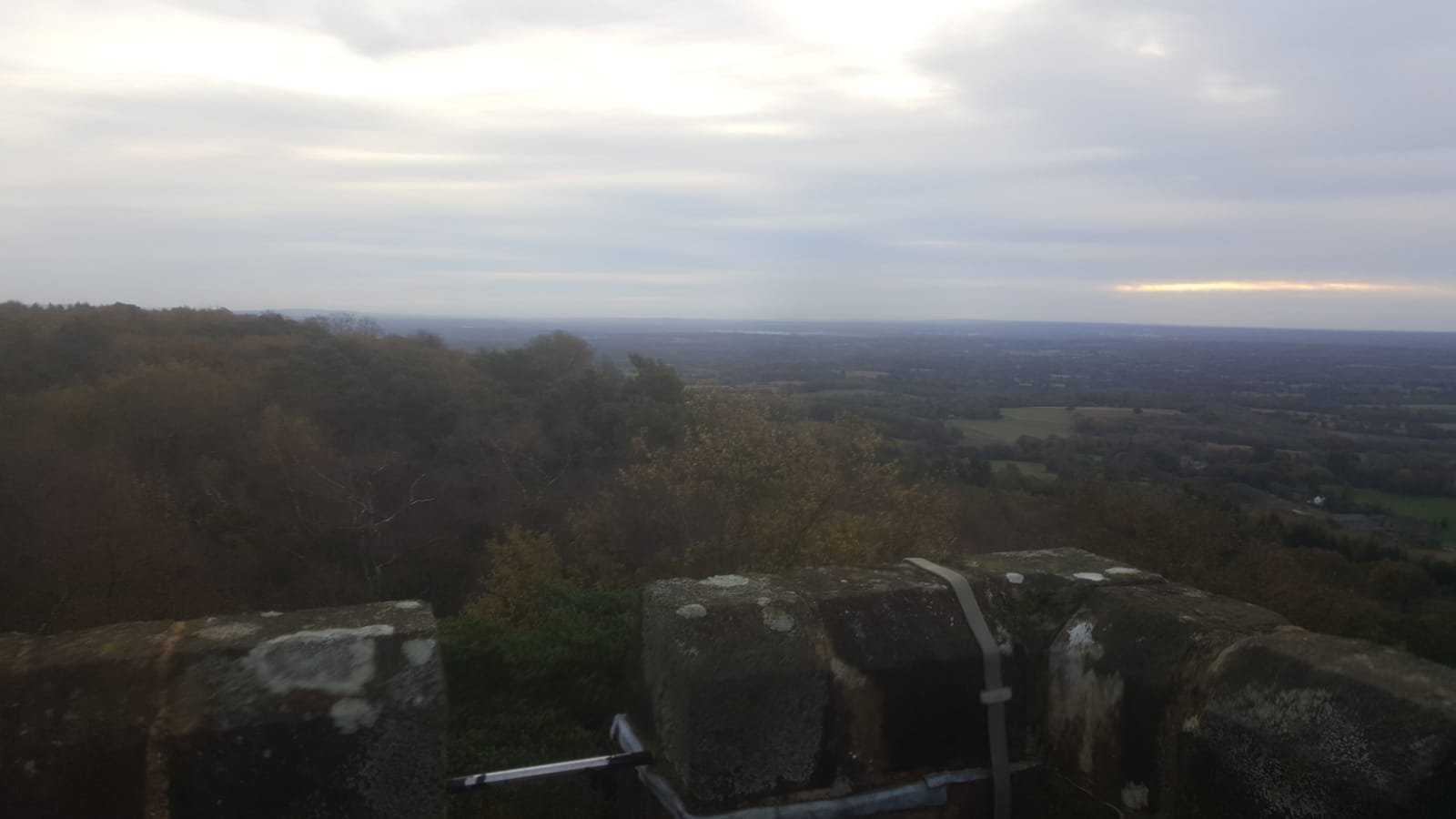With the autumn coming to a close, and most winter migrants already in the country, I managed to convince my dad to take me to Leith Hill for a Surrey Bird Club migration watch. I was surprised and very pleased he was willing to come along, despite it being a 06:30 meet..!
After arriving armed with flasks of tea and multiple layers, though not nearly enough considering my feet froze, I met Matt Phelps (tower watcher and patch birder at RSPB Pulborough Brooks in Sussex,) Steve Chastell and a handful of other surrey birders in the car park. Our walk in the near dark to the tower was to the backing sound of Siskin and Bullfinch in the woodland, as well as Redwing and a few Fieldfare. Unfortunately, the National Trust shop had been robbed overnight meaning it was a much less relaxed migration watch than we'd hoped...
Despite this, we'd barely settled at the tower before the first 2 'wheezing' Brambling of the day had flown over (the easiest way to describe a Brambling's call.) It was slow-going at times, with fewer Woodpigeon than hoped for (numbers barely reached the hundreds.) However, 2 Hawfinch spotted by Wes (who I'd been correctly told was one of Surrey's best birders) livened things up, even if I got onto them very late as they headed strongly west.
A further 3 Brambling flew through over the course of the next 3 hours, accompanying several hundred Chaffinch. A single Skylark also flew NW towards London, while one of my personal highlights was a group of around 10 Lesser Redpoll that flew directly overhead calling.
Eventually, I called my dad (who had taken refuge in a nearby pub) to come and pick me up.
Nonetheless, it was a very well spent morning watching various species move across the highest point in the south-east. I think migration is a slightly underappreciated spectacle - to realise how far some birds travel every year, against endless obstacles, weighing not much more than a 50p coin, is really quite unbelievable and to me one of the true wonders of the natural world. If more people, even more birders, took an interest in things such as migration, I think the number of species seen/heard during the autumn would increase significantly...
 |
| Leith Hill View |
After getting home at around 11:30, my family and I were feeling restless at home with it being such a crisp, autumnal day. Eventually, with up to 3 Black Redstart being seen little more than a kilometre up the road at Little Woodcote, we walked/cycled up around dusk. It took quite a bit of searching and just as I began to get frustrated, I bumped into Derek Coleman (who'd led a few public walks at Beddington Farmlands in previous years,) where we realised we were looking at the wrong fields. So sure enough, when we walked back up 'Telegraph Track' to a certain house the female Black Redstart flew into view in the fading light. It was definitely the best views I'd managed so far of the species, and so although it was quite dark I was still very chuffed. Then out the corner of my eye I watched the male momentarily shoot up to the top of a building further down!
We spent a good 15-20 minutes watching the female zipping around in the field, until it got dark. 4 Meadow Pipit, 8 Linnet, 5 alba Wagtail, 2 Skylark and 2 Goldcrest were also noted during this time, making it a very successful day's birding in Surrey :)
 |
| f Black Redstart |
 |
| m Black Redstart |
 |
| f Black Redstart |
 |
| f Black Redstart |
 |
| Jay |

























































